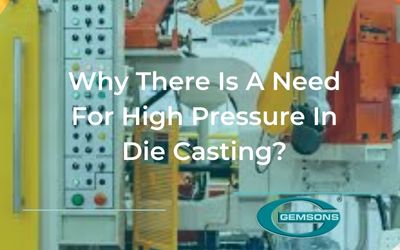Die casting is a cold metal-forming process that creates millions of products such as household appliances, automobile parts, and statuary. It relies on applying high pressure to force molten metal under high temperatures into the die cast parts like cavities. The liquid metal is usually poured into steel molds and placed in a large press or die casting machine.
The process employs an in-house mold to do the actual casting. The mold produces various parts with intricate shapes by using ceramic, sand, or wax-based molds. After filling the mold with the molten metal, it’s transferred to a press and subjected to high pressure. The process takes less than one minute and doesn’t require any heating after transferring molten metal from the furnace to the press.
What Is Die Casting?
Die casting is forcing the molten metal with high pressure into the mold cavity. The metal is poured into a mold, where it cools. When the metal has cooled, the mold is broken and removed. The resulting part takes shape as the metal solidifies around it. The space between them fills with molten metal at temperatures that exceed 200°C.
Die casting with the help of die cast parts offers several benefits over other casting processes: Its high heat capacity allows for faster cooling rates; its ability to drain from high-viscosity materials like zinc alloys; and its ability to produce complex parts without secondary processing.
Why Is There a Need For High Pressure In Die Casting?
Die casting is an efficient process that can produce many parts within the shortest possible time. The casting process requires a lot of pressure to force the liquid metal into the mold. This is usually done through hydraulic, mechanical, or pneumatic forces. The die casting machine exerts pressure on the molten metal to force it into a pre-designated cavity within a steel die called ‘sand.’ It then solidifies around it to produce various objects made from various metals, including aluminum, copper, and other nonferrous alloys. This all is possible with the die cast parts.
Here are reasons to use high pressure in die casting
- To make sure it fills each nook and crevice of a mold. This, in turn, allows you to produce complex-shaped products.
- When you use high pressure in die casting, it promotes faster draining, resulting in additional drossing – this improves the finish and overall quality of your product. As mentioned earlier, high pressure accelerates the solidification process and allows your product to cool more quickly. It ensures uniform cooling of your product which would otherwise be difficult to achieve with lower pressures.
- Allows the metal to solidify in a very short period of time. The time taken is usually expected to be less than a minute. The rate is much faster than any other casting process.
- Allows for uniform cooling because of the pressure that it provides. This prevents any formation of gas pockets within the mold and keeps air vents away from the product surface, which enhances its quality and strength.
- Allows for maximum flow rates and lower solidification times, as well as better properties as far as surface finish, density, hardness, and tensile strength are concerned.
In a nutshell, we can see that die casting requires high pressure to produce high-quality products of complex shapes. The die cast parts helps in producing uniform products for various uses.



Recent Comments